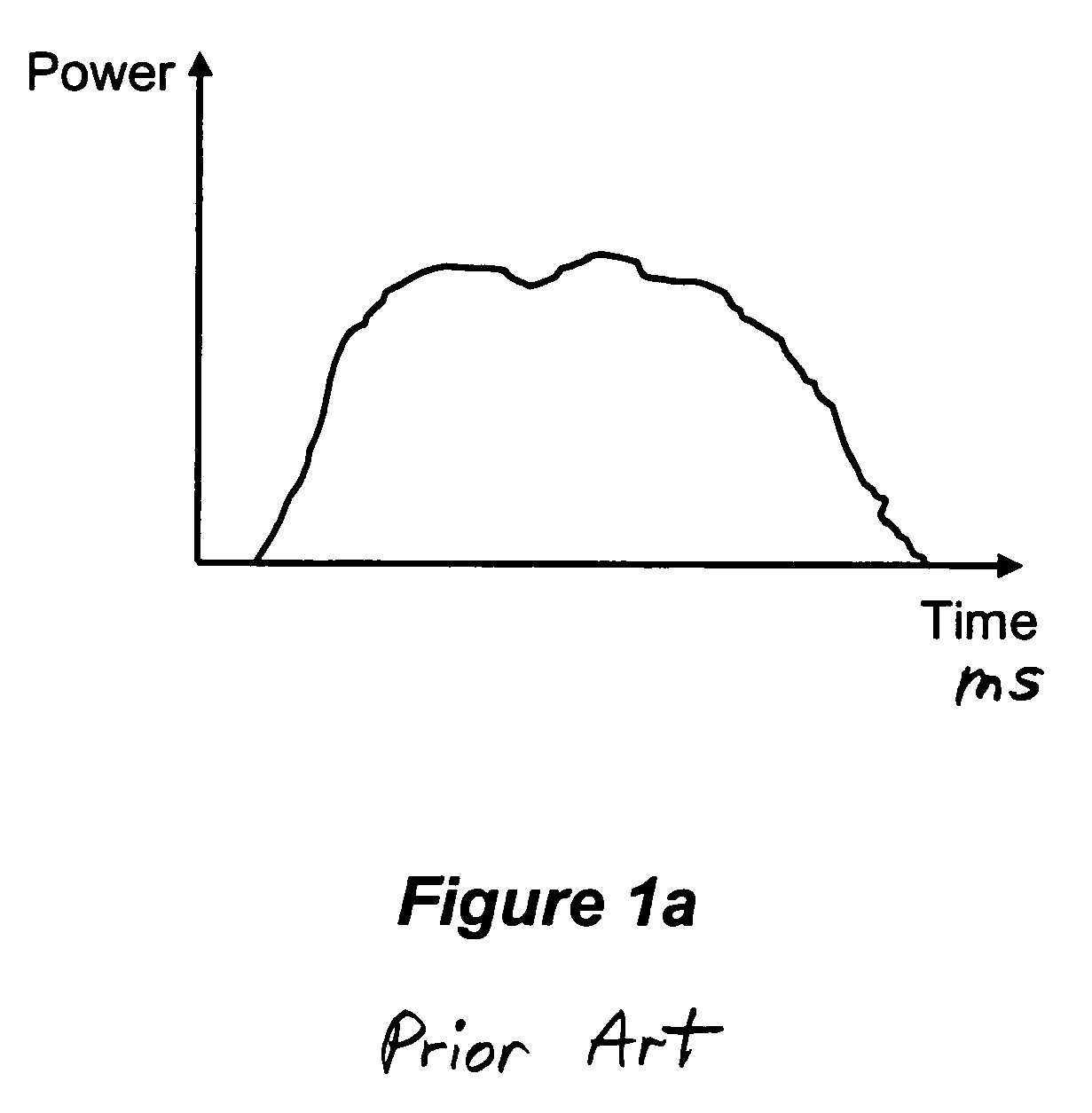Method and apparatus for laser cutting and drilling of semiconductor materials and glass
- Summary
- Abstract
- Description
- Claims
- Application Information
AI Technical Summary
Benefits of technology
Problems solved by technology
Method used
Image
Examples
Embodiment Construction
[0029]A preferred embodiment of the present invention comprises two phases. A first phase involves defining the required laser pulse shape and pulse energy via simulation of the laser induced melting of material, keyhole formation, melt ejection, and controlled cooling of the wall of the crater or cut. A second phase includes configuring a laser or lasers in order to produce a numerically predicted pulse shape, beam intensity distribution and pulse energy, and performing drilling or cutting of the material with the predicted laser parameters.
[0030]The invention is based on the following theoretical considerations. Typically, the shape of a laser pulse used for drilling and cutting is as shown in prior art FIGS. 1a, 1b, and 1c. As illustrated, the power of the laser beam increases rapidly, such that melting of the material surface and material ejection occur at the leading front of the pulse. The drilling or cutting occurs during the rest of the laser pulse by the ejection of the mol...
PUM
| Property | Measurement | Unit |
|---|---|---|
| Temperature | aaaaa | aaaaa |
| Semiconductor properties | aaaaa | aaaaa |
Abstract
Description
Claims
Application Information
 Login to View More
Login to View More - R&D
- Intellectual Property
- Life Sciences
- Materials
- Tech Scout
- Unparalleled Data Quality
- Higher Quality Content
- 60% Fewer Hallucinations
Browse by: Latest US Patents, China's latest patents, Technical Efficacy Thesaurus, Application Domain, Technology Topic, Popular Technical Reports.
© 2025 PatSnap. All rights reserved.Legal|Privacy policy|Modern Slavery Act Transparency Statement|Sitemap|About US| Contact US: help@patsnap.com



